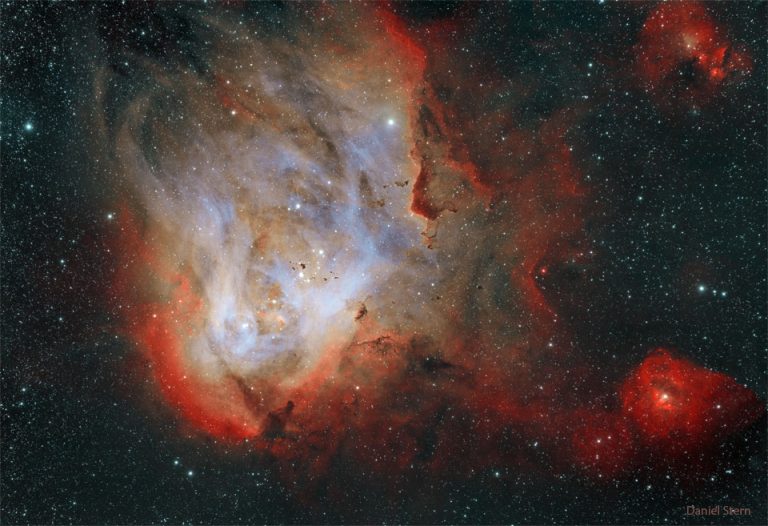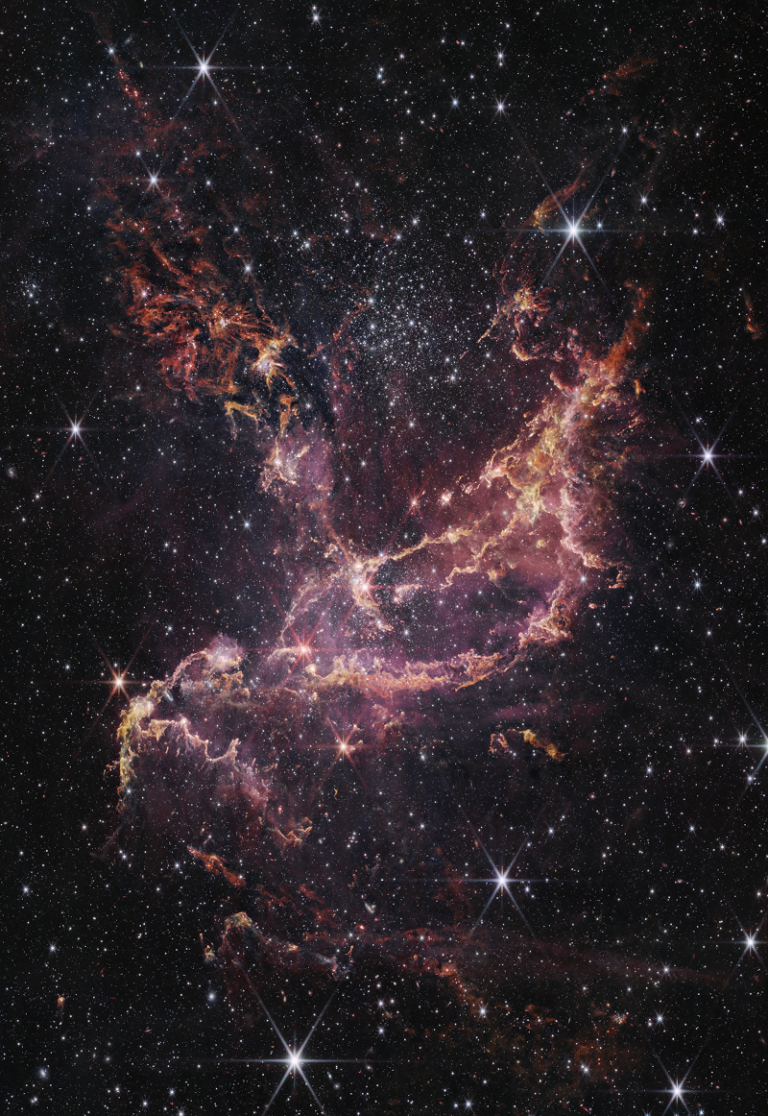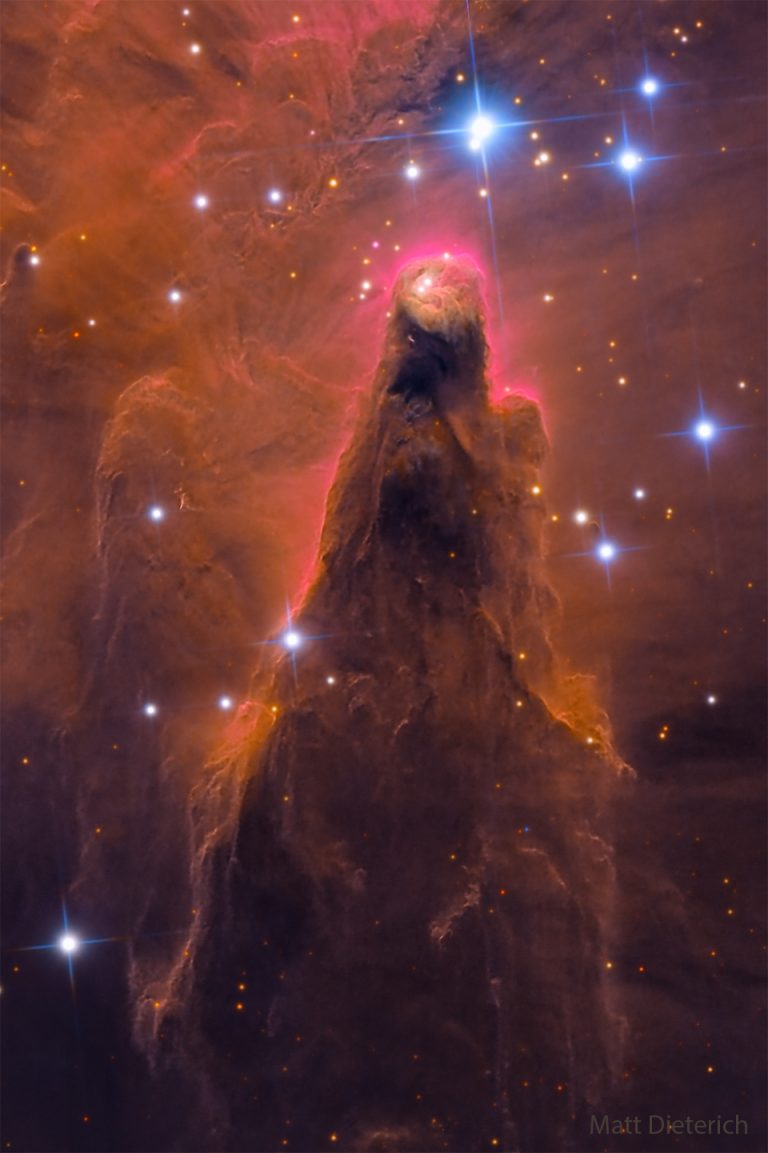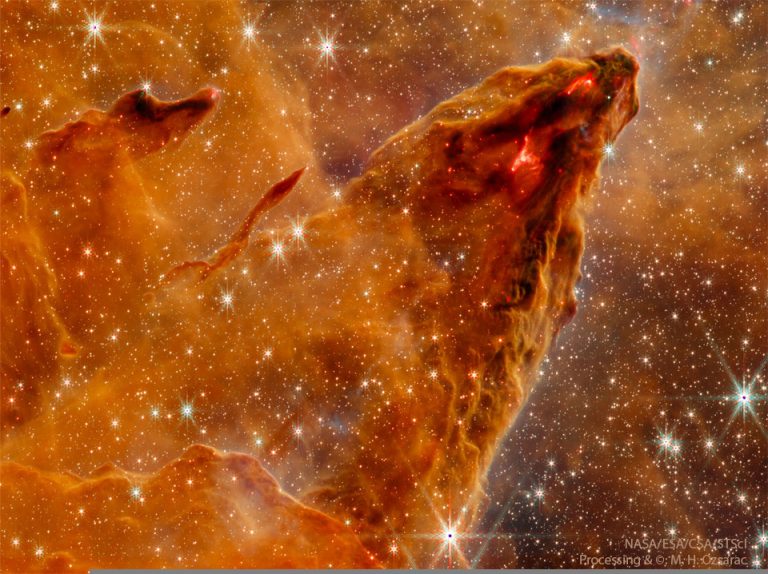IC 2944: 奔鸡星云
2023年4月10日 IC 2944: The Running Chicken Nebula Image Credit & Copyright: Daniel Stern Explanation: To some, it looks like a giant chicken running across the sky. To others, it looks like a gaseous nebula where star formation takes place. Cataloged as IC 2944, the Running Chicken Nebula spans about 100 light years and lies about 6,000 light years away toward the constellation of the Centaur (Centaurus). The featured image, shown in scientifically assigned colors, was captured recently in a 16-hour exposure over three nights. The star cluster Collinder 249 is visible embedded in the nebula’s glowing gas. Although difficult to discern here, several dark molecular clouds with distinct shapes can be found inside the nebula. Tomorrow’s picture: almost north IC 2944: 奔鸡星云 影像提供与版权: Daniel Stern…










